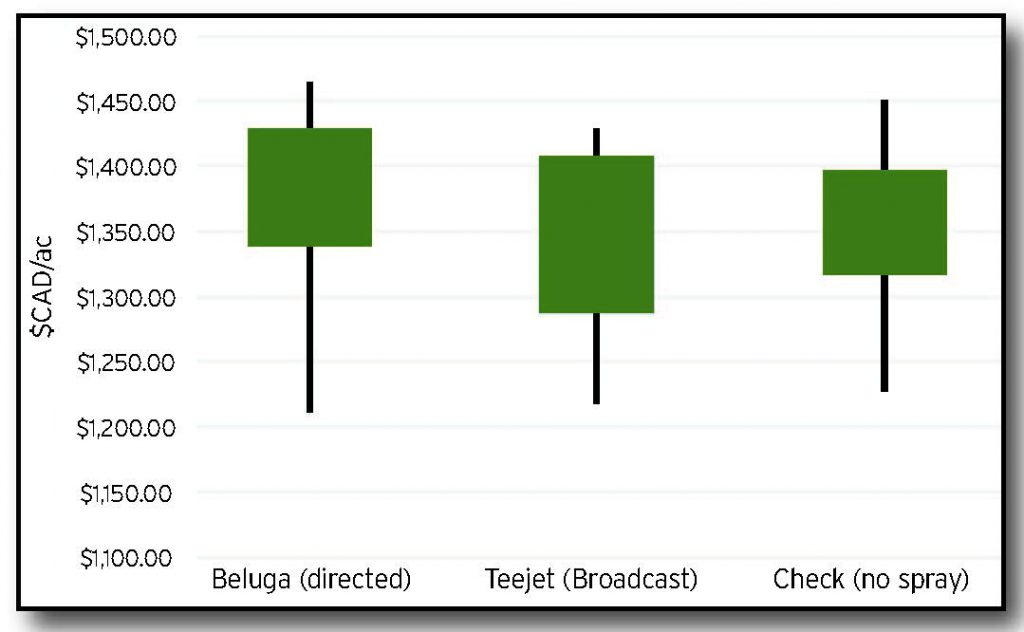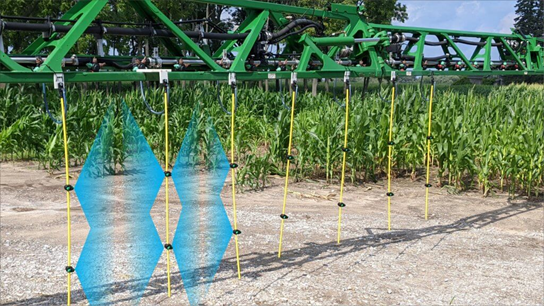Beluga drop hoses
AGRONOMIC INFORMATION FROM ONTARIO'S CROP SPECIALISTS

IN 2019 WE evaluated the spray coverage from nine application methods on corn silks. The results showed that a directed application from drop hoses (aka drop pipes, drop legs) suspended between the rows produced significantly higher deposits.
Drops aren’t popular because they tend to snag in dense foliage, deflecting or swaying during an application. However, the Beluga drop hose developed by Agrotop (Germany) is stiffer, lightweight, quick-connect and has a unique low-profile nozzle body with less potential to snag.
In 2021 we tested them against a typical overhead broadcast arrangement in Port Rowan, Ontario, on 28 acres spanning two fields. Each treatment was a single pass covering either 0.8 or 1.06 acres. There were two different tank mixes: first, 405 mL/ac of Miravis NEO and 50 g/ac of Delegate, and second, 303 mL/ac of Headline AMP, 202 mL/ac of Caramba, and 50 g/ac of Delegate. We assembled a set of 60″ drop hoses with two nozzle bodies each to span the canopy.

We compared mean net revenues (not yield) to normalize different moisture levels. All corn was Grade 2, and while not statistically significant (ANOVA, 95% confidence), the drops resulted in an average net profit of $27.76/ac CAD versus unsprayed checks, while the broadcast application resulted in a net loss of $5.61/ac CAD. When DON and Zearalenone were examined, levels were high in all treatments with no statistically significant difference and no obvious trend (data not shown).

Spray coverage is a critical factor when using suppressive pesticides. We propose that the superior coverage from the drop hoses maximized the protection provided by the fungicides. The financial loss incurred from the conventional broadcast application method coupled with the mycotoxin analysis results raises important questions about the overall efficacy of fungicides for ear moulds.
Read the entire study on the Sprayers 101 website: www.sprayers101.com/corn-beluga. •



















